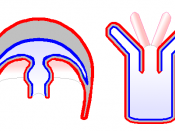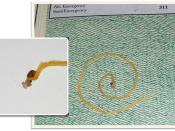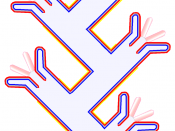INVERTEBRATES
Introduction:
Animalia is the largest of the five kingdom system, with over one million species. It has an extreme variety of shapes, colors, and sizes. It is made up of eukaryotic, multicellular, heterotrophic organisms that are either aquatic or terrestrial and reproduce sexually or asexually.
Invertebrates are a type of animal that have no backbone. They make up for about 97% of the animal kingdom. Some invertebrates are earthworms, butterflies, jellyfish, and giant squid. There are two kinds of invertebrates, lower and higher. Lower invertebrates are further behind in evolution, they are very soft and squishy and more vulnerable to predators. Higher invertebrates are further along in evolution, they are tougher and can be considered less vulnerable.
Porifera:
General Characteristics:
oSponges are hollow cylinders that are closed at the bottom and have an opening at the top called an osculum.
oThe cylinder is lined with special collar cells (choanocytes) which by beating their flagella pulls water into the sponge through pores and canals and circulates through the osculum.
oSponges live a sessile lifestyle, so when collar cells pump water into sponge they also screen bacteria, unicellular algae, protozoans, and bits of organic matter out of it and engulf it. Known as filter feeding.
oWhile circulating water, wastes are excreted into the water as it exits the osculum.
oFor support some sponges have simple skeletons made of protein fibers called spongin. Others have skeletons made of tiny, hard particles called spicules.
oSponges reproduce asexually by forming small buds that break off and live seperatley. And sexually by sending sperm into pores of another sponge.
Evolutionary Development:
Porifera represents the least evolutionarily advanced animals of the animal kingdom.
Classes:
oCalcarea ? they have spicules of calcium carbonate.
oHexactinella ? They have spicules of silicon dioxide.
oDemospongiae ? They have spongin or...


